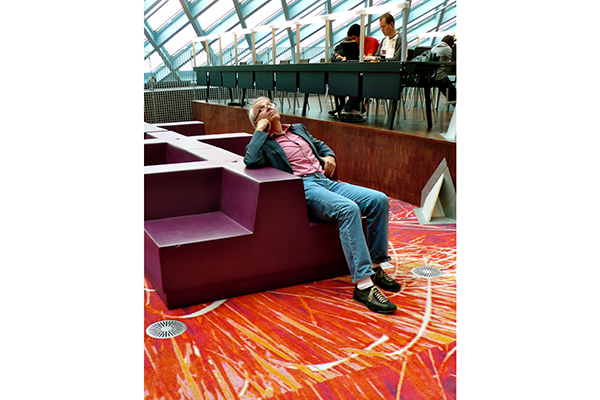Whether it’s stepping into a building he’s designed, such as the Austin-Bergstrom International Airport and Austin Convention Center, or taking one of his undergraduate architecture courses, most UT students have had some sort of interaction with Lawrence Speck.
Speck has been at UT since 1975, playing every role from associate professor to Dean of Architecture during his tenure. In anticipation of his TEDxUTAustin talk on April 6 at 9 a.m. in the Engineering Education and Research Center, The Daily Texan spoke to Speck to understand his thoughts on the spaces provided by the UT and Austin communities.
The Daily Texan: What do the new engineering, computer science or MBA buildings indicate about the state of architecture at the University?
Larry Speck: There are times when the University has just built square feet, maybe growing quickly and were not very careful and didn’t build very good buildings. I personally think we’re in an era now where we’re building some damn good buildings. Programs are realizing we can’t be competitive if we don’t look progressive. You want to feel like there’s action and dynamism and movement and that EER building says it. It’s beautiful. I was there on Sunday and there were 300 people in that atrium. These buildings are just game changers. Now there’s a place to do your team-based projects, a place to just interact with your community, a place so you don’t have to go home for everything. And it was very intentional by the University.
DT: How do you feel about the living spaces in the UT community?
LS: In my class I talk about Baker House at MIT, a great communal living space. There’s just a real care about your experience coming and going in your living space. We don’t have on-campus buildings that really do that like Baker House. It doesn’t cost money to do that. It just means you must pay attention. We did a survey of the 14 (sic) student residences on campus and looked at student interactivity. The one that came out the very top was Moore-Hill. That one is sweet. It’s a good size. It’s laid out properly. It’s not glamorous looking. But it really works. The students who live there, they know each other, they like it, they get to make friends easily.
DT: What would you incorporate into a potential new dormitory design for UT?
LS: In a freshman dorm, you really want heavy interaction. I personally think you ought to be sharing a bathroom. Even if you ask them before they come to school, they’ll say, “I had a private bathroom at home, and I want one in college.” But they don’t know what college life is like, so you’re asking the wrong person. I think you try to just get things more communal, share more things. A big room isn’t so important. It’s important to have study lounges as an alternative space to go besides their room, where you can do project-based learning. There are campuses now with makerspaces in the dorms. We aren’t doing that yet.
DT: How significant are outdoor spaces in a technology-driven campus?
LS: I think actually (technology) is pushing us to be outdoors more. If you stare at that screen for three hours, you’ll be driven to get some relief. We’re doing what will be the tallest office building in downtown Austin and we’re putting huge porches on all upper floors. It drives me nuts to be in an indoor environment on like the 32nd floor. Now you can go out on the porch on a day like today, do your email for two hours and it’s just a lifesaver. People want to be outdoors. Hike and bike trails have never been more popular, because sitting at a screen just kills you; it’s like smoking.
DT: Can you give readers a preview of your TEDx talk?
LS: It’s about how you use constraints as a provocation for kicking your butt and making you think of new solutions. I’m going to use Buffalo Bayou Park in Houston as an example. It’s a freaking floodway. That’s where Hurricane Harvey comes, where all the water must go. So you’re designing a park that people can enjoy it for recreation — a healthy, beautiful green space in the middle of the city — but it’s got enormous constraints. The talk is about how do you use constraints to make design better? Not just acceptable, but you need to invent new things that you’d have never done if you didn’t have the constraints in place.















